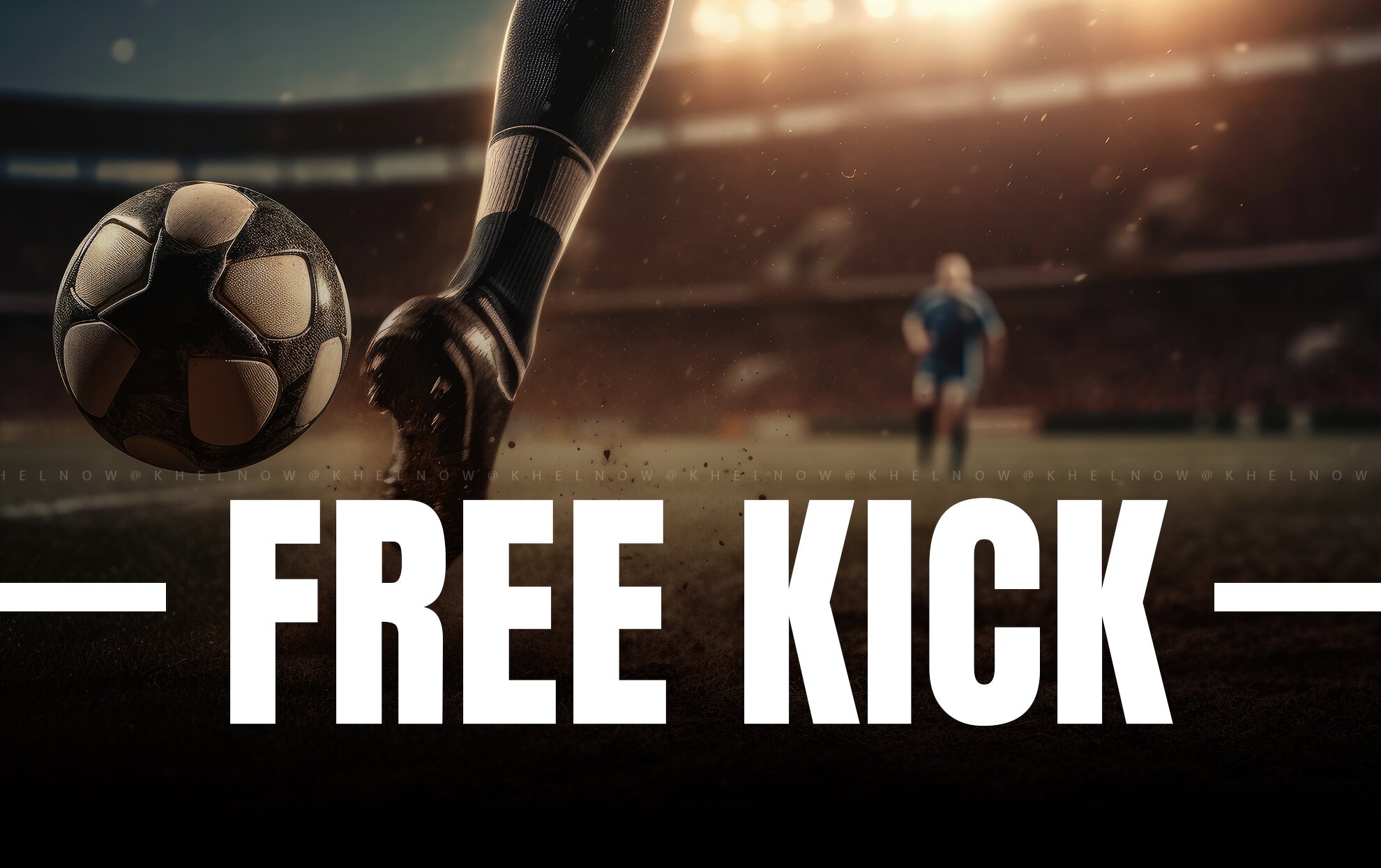Free kick rule in football: A comprehensive guide

There are various different types of free-kicks in football.
When the opposition commits an offence, the play in football restarts using a free kick. The free kick will thereafter be executed by the team that did not commit an offence. One of the most prevalent consequences of breaking any of the numerous game rules is a free kick.
The set-piece taker on a direct free kick has two options: either shoot straight towards the goal or choose to pass the ball to one or more teammates for a greater chance to score.
Conversely, an intermediary is involved prior to the shot being taken in an indirect free kick, which is more akin to a two-touch free kick. Unlike an indirect free kick, which is awarded when the referee’s hand is raised vertically, a direct free kick is awarded when it stretches horizontally.
The way a free kick is executed varies according to the offence that was committed. Direct free kicks typically result from sloppy or too-forceful fouls by a player. On the other hand, indirect free kicks are usually given without any direct contact. A handball offence may result in direct or indirect free kicks, depending on its circumstances.
What are the free kick rules?
A few rules are in effect for the specified free-kick situation. For the free kick to be taken, the ball needs to be motionless.
A free kick cannot be started until the ball is motionless. Since there is typically a brief wait after a free kick is awarded, you probably won’t give this rule much thought. The “quick free kick” regulation is a prime illustration of its significance, as players do it quickly when the opponent is settled and it can result in goals sometimes for a team who has taken the free-kick.
Also Read: What does a yellow card mean in football/soccer?
It is not permitted for the player receiving the free kick to make two consecutive touches. Once another player has touched the ball, the player is not allowed to touch it again.
The free kick is often to be executed from the area where a foul was committed. The referee draws a line with his spray where the player keeps the behind it and the official then creates a wall that usually defends a free-kick.
Until the free kick is taken, the opponent must be a minimum of 9.15 meters away from the ball. On direct free kicks, this also holds for the free kick wall.
There is another kick which is called a penalty, and it usually happens when the player is fouled inside an opposition box, which is called the “D”, from there the player goes one-on-one with the opposition goalkeeper.
The player can also take direct and indirect shots towards the goals. However, players usually take direct shots, in very rare times we see when a player does a slight touch for his teammate to score the goal, which is pre-planned.
For more updates, follow Khel Now on Facebook, Twitter, and Instagram; download the Khel Now Android App or IOS App and join our community on Telegram.
After earning a bachelor's degree in mass media, Rajarshi began his career as a sports writer in 2019, driven by his passion for sports journalism. He has been working in the field for over six years. A devoted fan of Lionel Messi and Barcelona, Rajarshi has been involved in sports since childhood. Before turning his focus to journalism, he even represented his college at the state level. Along with covering football, he enjoys playing the game, watching movies, and experimenting with new recipes in his spare time, as cooking is one of his favorite hobbies.
- Al Ettifaq vs Al Okhdood Preview, prediction, lineups, betting tips & odds | Saudi Pro League 2025-26
- Al Ahli vs Al Nassr Preview, prediction, lineups, betting tips & odds | Saudi Pro League 2025-26
- Rayo Vallecano vs Getafe Preview, prediction, lineups, betting tips & odds | LaLiga 2025-26
- Toulouse vs RC Lens Preview, prediction, lineups, betting tips & odds | Ligue 1 2025-26
- Cagliari vs AC Milan Preview, prediction, lineups, betting tips & odds | Serie A 2025-26
- Top six quickest players to reach 100 Bundesliga goal contributions; Kane, Aubameyang & more
- Top three highest goalscorers in French football history; Kylian Mbappe & more
- With ₹19.89 crore bank balance; AIFF & Indian football standing on edge of financial collapse?
- AFCON 2025: All nations' squad list for Morocco
- Zlatan Ibrahimović names one of Lionel Messi’s sons as his “heir”